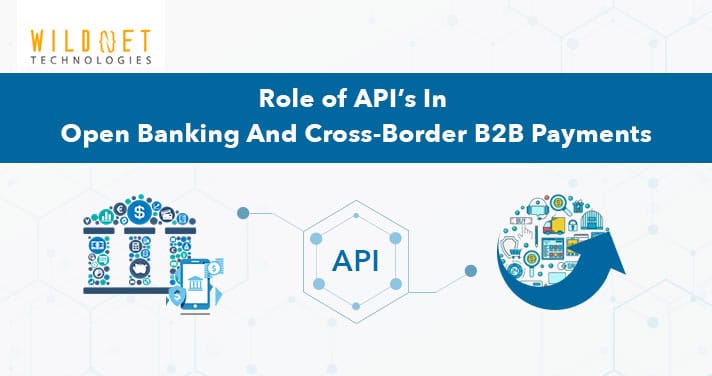It’s the classic SEO vs CRO conversation, we’re going to cover in this blog. The major confusion for marketers and UI/UX designers- should you attract more visitors, or focus on getting the most from those already on your site?
Key Takeaways
- Start with SEO if your site lacks traffic. Build visibility with the recommended toolkit.
- Then layer CRO once you have traffic- Use analytics and heatmaps to guide A/B tests.
- Maintain dual momentum- Both SEO and CRO efforts live concurrently for compounding growth.
- Measure with shared KPIs- Traffic, engagement, conversion, CPA.
- Implement CROss-functional workflows- Ensure both teams learn and grow together.
- Stay agile – AI trends like AEO and generative snippets demand new optimization methods.
Table of Content
- SEO vs CRO: Defining the Terms
- Knowing Where to Start: Context Matters
- When CRO vs SEO: Tactics Clash
- What to Do Next
- Tactical Playbook: Aligning CRO and SEO Strategically
- Toolkits to Power Your CRO + SEO Strategy
- KPI Dashboards: Measuring CRO vs SEO Together
- Workflow for SEO + CRO Teams
- Future Direction: AI, AEO & CRO in SEO
- Conclusion
Top voices in the field consistently conclude: It’s not about choosing one or the other, because they’re interdependent. Think of SEO conversion optimization as a tandem: SEO fills the funnel, and CRO turns prospects into conversions.
So, it was never CRO vs SEO, but CRO and SEO. Both are allies.
SEO vs CRO: Defining the Terms
Using various tactics like keyword targeting, backlinks, mobile optimization, and speed, when you aim to improve website position on search engines like Google, it’s called SEO. Its main goal: more organic traffic.
CRO, on the other hand, refines your site’s elements, like CTAs, layouts, user flow, to convert visitors into leads or customers.
When you use both CRO and SEO in your digital strategy, only then you can actually expect great results.
Why Both Are Essential
Here’s why the synergy matters:
- Traffic without conversion is wasted: Top-ranking pages lose value if users don’t engage.
- Improved UX signals boost SEO: Faster loading, mobile-friendly design, and clean layout help both conversions and rankings.
- Data from CRO feedback refines SEO: User behavior reveals intent and hotspots, perfect for optimizing content.
In the SEO vs CRO debate, it’s not one vs the other, it’s that both combined outperform either in isolation.
Knowing Where to Start: Context Matters
Are You Getting Traffic? If the answer is No or Low traffic, prioritize SEO first. You can’t convert what you don’t have. If you’ve steady traffic but low conversions? Focus on CRO first. Fixing page elements delivers quick ROI on existing visitors.
Both SEO and CRO are key, but it sounds like you should focus on CRO first. If your website has issues converting visitors, then getting more traffic won’t really help.
The Timeline Approach: When to Switch Gears
Most SEO efforts take 4-6 months to show real results. During that time, begin laying CRO groundwork:
- A/B test CTAs
- Streamline navigation
- Clean up page speed
After consistent traffic has arrived, concentrate on SEO conversion optimization, refining and optimizing conversions with CRO insights.
When CRO vs SEO: Tactics Clash
CRO often suggests changes in titles, CTAs, and navigation that might unintentionally impact search rankings. Common clash areas include:
- Changing headline/URL structures
- Introducing pop‑ups/interstitials
- Altering internal link flow
To align SEO and CRO:
- Collaborate- SEO and CRO teams should align goals.
- Run tests safely- Use A/B testing tools following Google’s anti‑cloaking guidelines.
- Monitor ranking impact before fully deploying changes.
Summary Table: CRO vs SEO
| Scenario | Priority | Why |
| Low traffic, good conversion paths | SEO first | Need audience before conversion |
| High traffic, poor conversion performance | CRO first | Improve ROI from current users |
| New site building from scratch | SEO → CRO | Acquire then convert |
| Steady organic traffic + decent conversion | CRO continual even during SEO |
What to Do Next
To set strong foundations for CRO in SEO, start with:
For SEO:
- Keyword and competitive research
- On-page content optimization
- Technical fixes (speed, mobile)
- Link-building efforts
For CRO:
- User flow and analytics audit
- Heatmaps, session recordings
- A/B test form fields, headlines, CTAs
- Simplify checkout or signup steps
Progressively move from SEO to CRO as traffic grows, ultimately blending both for steady, compounding gains.
Tactical Playbook: Aligning CRO and SEO Strategically
The Foundation: Audit and Planning with SEO + CRO in Mind
A successful CRO & SEO plan always begins with a diagnostic audit:
- Technical & UX audit (site speed, mobile responsiveness, navigation clarity). These audit details lay the groundwork for both SEO performance and conversion readiness.
- Analytics deep dive (via tools like Google Analytics, GA4): identify high-traffic pages with underperforming conversion rates—this is where SEO conversion optimization starts.
- Goal definition: define what “conversion” means (form fill, purchase, signup) and set KPIs like conversion rate, bounce rate, user flow, and CPA for both SEO and CRO.
User-Centric Keyword Strategy → CRO Opportunities
Optimizing for SEO used to mean rankings and volume, but today it also deeply impacts your CRO funnel:
- Focus on high-intent, long-tail keywords aligned with what users are ready to convert on. These queries can boost conversion effectiveness.
- Let keyword intent guide CTA framing: a search for “buy smartwatch” should lead to clear “Shop Now” CTAs delivered prominently.
- Embed long-tail variants in headings and on-page content to both rank and resonate with conversion-focused audiences.
Optimized Headings That Convert
Your headings impact both SEO vs CRO success:
- Keep headings ≤ 60 characters so they don’t truncate on SERPs—this drives better CTR from organic listings.
- It’s best to use words like get, order, start along with main keywords. These action-driven words actually motivate visitors to make a step.
- Structure h1-h3 correctly. This is not a random thing but a great tactic to improve readability. It also supports SEO & acts as a funnel, directing the user towards conversion areas on-page.
Meta Descriptions & CTAs for Search and Site
Think of your SERP snippet as the opening line of a conversation with your visitor:
- Use compelling, keyword-inclusive meta titles and descriptions to capture clicks, then continue the experience on-page with CRO-friendly messaging.
- Align CTA wording with search intent: “Download free guide” for informational queries; “Buy now” for transactional ones.
- Test description variations over time to increase SERP CTR, which also sends positive signals for SEO.
Site Speed, Mobile-Friendliness & UX Unity
Speed and responsiveness are key signals for both CRO and SEO efforts:
- A fast, mobile-friendly site serves both ranking and conversion goals. Google uses Core Web Vitals while users demand quick loading and seamless interaction.
- Ensure your site structure is intuitive, menu visibility, breadcrumbs, and content hierarchy help users find answers and encourage conversions.
- Regularly test mobile UX to ensure buttons are tappable, forms work smoothly, and navigation is clear, preventing frustration and abandonment.
Strategic Internal Linking for Flow & Ranking
Well-placed internal links build authority while guiding users through conversion funnels:
- Connect informational pages to commercial or transactional pages with contextual anchor text, supporting both SEO crawlability and CRO modular flow.
- Use footer links or “related articles” sections to keep visitors moving deeper rather than bouncing.
- Make it a habit to check if there are any broken or disconnected pages. This exercise will act in the favor of both SEO and CRO.
Social Proof & FAQs: Dual-Purpose Content
Add trust elements that impact SEO and enhance conversion pathways:
- Include review snippets, testimonials, or client quotes on pages—not only boosting credibility for users but also signaling quality for search engines.
- Build an FAQ section using structured markup to appear in search “People Also Ask” boxes, while answering visitor questions and overcoming objections on-page.
A/B Testing Without SEO Collateral Damage
Crucial for SEO conversion optimization success:
- Run controlled A/B experiments on CTAs, headlines, layouts, but configure tools to avoid cloaking and ensure Google still crawls a consistent control version.
- Prioritize pages with high traffic so experiment results reach significance faster.
- Use heatmapping and session recordings to inform CRO hypotheses and spot friction points that may also impact SEO engagement metrics.
Hub & Funnel Strategy: Content Organization + Conversion Paths
A thoughtful content architecture supports both ranking and conversion journeys:
- Define core “hub” posts for high-value long-tail keywords, each linking to deeper subtopics/pages, this builds topical authority and keeps conversion pathways flowing .
- Add CTAs in hubs to drive users toward cohesive conversion steps like sign-up forms, contact pages, or product guides .
- Ensure each tier of content (informational → consideration → decision) features appropriate next-step CTAs aligned with keyword intent.
Ongoing Measurement & CROs-Team Collaboration
Effective SEO vs CRO success depends on consistent alignment:
- Shared KPIs: monitor organic traffic, click-through rates, bounce rate, conversion rate, engagement time, and CPA—representing joint SEO + CRO performance.
- Hold regular check-ins between SEO and CRO teams—share insights, analytics, and test results to guide new tests and align optimizations .
- Use unified tools (e.g., GA4 dashboards, heatmaps, A/B platforms) that blend SEO and CRO metrics for clearer ROI tracking.
Toolkits to Power Your CRO + SEO Strategy
SEO Tools: Authority, Keywords, and Technical Health
Based on top sources, here’s a curated set of best-in-class SEO platforms:
- Surfer SEO – Real-time AI-backed content optimization and keyword guidance.
- Semrush – All-in-one suite for keyword research, competitor tracking, site audits, plus AI-powered Content Toolkit.
- Ahrefs – Market-leading backlink index and competitor insights.
- Screaming Frog SEO Spider – In-depth crawling for technical issue identification.
- Google Search Console & PageSpeed Insights/Lighthouse – Core free tools for SERP insights and Core Web Vitals diagnostics.
- Mangools / Moz Pro – User-friendly suites ideal for small businesses.
- ClearScope, Ubersuggest, AnswerThePublic – Supporting content relevance, keyword ideation, and question-based content.
CRO Tools: Funnel Analysis + Testing
Combine your SEO stack with CRO-specific tools:
- Google Analytics 4 (GA4) – Central analytics for traffic, funnels, and conversion tracking.
- Heatmaps & Session Recorder (e.g., Hotjar, Crazy Egg) – Visual user behavior insights.
- A/B Testing Platforms – Optimizely, VWO, or Google Optimize to test buttons, headlines, layout.
- PageSpeed & Lighthouse – Maintain Core Web Vitals as user experience and SEO signals.
KPI Dashboards: Measuring CRO vs SEO Together
A unified dashboard helps monitor SEO conversion optimization in context:
| Metric | System | Frequency | Why it matters |
| Organic visits | SEO | Weekly | How well your strategy is bringing in traffic |
| SERP CTR | SEO → CRO | Monthly | Signals from title/meta where SEO meets CRO |
| Core Web Vitals score | SEO/CRO | Bi-weekly | Combines both ranking and UX health |
| Bounce rate / Dwell time | CRO/SEO | Weekly | Indicates engagement quality |
| Conversion rate | CRO | Weekly | Direct impact measurement |
| Conversion volume | CRO | Weekly | Absolute uplift from CRO efforts |
| Cost per Acquisition (CPA) | CRO/SEO | Monthly | Combines acquisition and conversion expense |
Use platforms like Data Studio/Looker, GA4 dashboards, or integrated tools like Semrush to monitor and visualize these holistically.
Workflow for SEO + CRO Teams
A collaborative process brings CRO SEO into reality:
Step 1: Monthly Planning & Audit
- SEO: run site audit (loading speed, crawl errors, keyword rankings)
- CRO: examine UX heatmaps, session recordings, funnel drop-off points
Step 2: Alignment Meeting
- Share findings: who’s gaining traffic? Where are conversion gaps?
- Define focus pages for A/B testing informed by SEO data
Step 3: Hypothesis Building
- E.g., “SEO data shows high-volume keywords landing on Page X → test a stronger CTA above the fold based on intent”
- Ensure SEO elements (titles, headings) aren’t compromised
Step 4: Experiment & Monitor
- Run CRO tests for 2-4 weeks depending on traffic
- SEO team monitors any ranking shifts or changes in CTR
Step 5: Rollout & Refine
- Adopt winning variations
- SEO updates based on improved CTR/engagement (e.g., update meta descriptions to mirror successful CTA)
Step 6: Feedback Loop
- CRO team reports conversion impact
- SEO team reflects uplift in SERP metrics and rankings
- Both collaborate to scale successful changes aCROss the site
This workflow ensures SEO vs CRO becomes a cooperative effort rather than competing silos.
Future Direction: AI, AEO & CRO in SEO
A seismic shift is underway: Answer Engine Optimization (AEO), optimizing for AI-generated snippet responses, is emerging as the next frontier.
AEO is going beyond keywords, brands need structured, authoritative content that qualifies for AI-powered “answers,” not just rankings.
Coupled with CRO insights:
- Use analytics to know which pages trigger featured snippets or AI overviews
- Build content that anticipates conversational intent and positions your site as the definitive answer
Another trend: startups like Athena and Profound are creating tools to help brands optimize presence within AI-powered search outputs. This integration of AI + CRO + SEO will be the hallmark of successful digital strategies in 2025 and beyond.
Conclusion
As we’ve explored, the SEO vs CRO debate isn’t an either/or proposition, it’s about blending visibility and action. SEO drives quality traffic from high-intent searches, while CRO ensures that each visitor has the highest chance to convert. Only when these strategies are integrated, can you truly master SEO conversion optimization and experience exponential growth.
If you’re looking for the best SEO agency that can also help you in improving your site’s CRO, Wildnet is the one. With 19+ years of experience, we know the ins and outs of CRO SEO and have helped 4,100+ brands get real results. So, why wait? Connect now.






